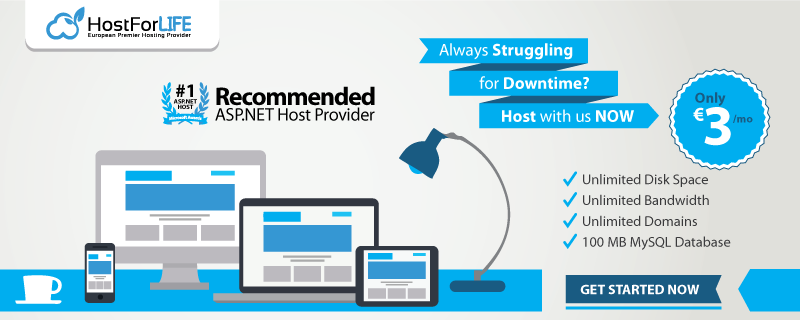I discovered that Swagger can be used for much more than just simple API description, particularly in practical tasks. Advanced use cases like grouping endpoints, allowing versioning, using JWT to secure Swagger, and even hiding endpoints when necessary have improved the efficiency and professionalism of my development approach. In addition to code snippets, advice, and things to avoid, I'm revealing the Swagger features that I really use in.NET 6, 7, and 8 projects in this post.
1. Grouping Endpoints (Using Tags)
Sometimes your Swagger UI becomes overwhelming with too many endpoints. Grouping them into logical sections makes it easier to navigate.
Option 1. Group by controller name (default)
This happens automatically, but you can customize it further.
Option 2. Use [ApiExplorerSettings(GroupName = "v1")]
Or use SwaggerDoc and define multiple groups.
// Program.cs
builder.Services.AddSwaggerGen(c =>
{
c.SwaggerDoc("v1", new OpenApiInfo { Title = "My API V1", Version = "v1" });
c.SwaggerDoc("v2", new OpenApiInfo { Title = "My API V2", Version = "v2" });
});
// Controller
[ApiExplorerSettings(GroupName = "v2")]
[Route("api/v2/[controller]")]
public class OrdersController : ControllerBase
{
//...
}
Now, Swagger UI will show v1 and v2 as tabs.
2. API Versioning in Swagger
If your app supports multiple API versions, Swagger should reflect that. Here’s how to set it up.
Step 1. Add required NuGet packages
dotnet add package Microsoft.AspNetCore.Mvc.Versioning
dotnet add package Microsoft.AspNetCore.Mvc.Versioning.ApiExplorer
Step 2. Configure versioning
builder.Services.AddApiVersioning(options =>
{
options.ReportApiVersions = true;
options.AssumeDefaultVersionWhenUnspecified = true;
options.DefaultApiVersion = new ApiVersion(1, 0);
});
builder.Services.AddVersionedApiExplorer(options =>
{
options.GroupNameFormat = "'v'VVV";
options.SubstituteApiVersionInUrl = true;
});
Step 3. Update SwaggerGen
builder.Services.AddSwaggerGen();
builder.Services.ConfigureOptions<ConfigureSwaggerOptions>();
(You’ll need to create a ConfigureSwaggerOptions class — I can generate this for you if needed.)
3. Add JWT Authentication to Swagger UI
If you're using JWT Bearer tokens, you can allow Swagger to send them in request headers.
Configure Swagger with Security Definitions
builder.Services.AddSwaggerGen(c =>
{
c.AddSecurityDefinition("Bearer", new OpenApiSecurityScheme
{
Description = "Enter 'Bearer' followed by your JWT token.",
Name = "Authorization",
In = ParameterLocation.Header,
Type = SecuritySchemeType.ApiKey,
Scheme = "Bearer"
});
c.AddSecurityRequirement(new OpenApiSecurityRequirement
{
{
new OpenApiSecurityScheme
{
Reference = new OpenApiReference
{
Type = ReferenceType.SecurityScheme,
Id = "Bearer"
}
},
Array.Empty<string>()
}
});
});
Now Swagger UI will show an Authorize button at the top where you can paste your token.
4. Hiding Specific Endpoints from Swagger
Sometimes you don’t want every endpoint exposed in Swagger, especially internal or admin-only APIs.
Option. Use [ApiExplorerSettings(IgnoreApi = true)]
[ApiExplorerSettings(IgnoreApi = true)]
[HttpGet("internal-only")]
public IActionResult HiddenEndpoint()
{
return Ok("This won't appear in Swagger");
}
Works at both the action and controller level.
5. Export Swagger JSON/YAML
You can share your API contract with clients or import it into tools like Postman or Azure API Management.
JSON endpoint:
https://localhost:5001/swagger/v1/swagger.json
YAML: You’ll need a separate generator, or use tools like Swagger Editor or SwaggerHub to convert JSON to YAML.
6. Improve Models with DataAnnotations
Swagger auto-generates schemas from your models. Enhance them with [Required], [StringLength], and summaries.
public class ProductDto
{
[Required]
[StringLength(50)]
public string Name { get; set; }
/// <summary>Product price in USD</summary>
public decimal Price { get; set; }
}
Make sure XML comments are enabled to see them in the UI.
7. UI Customizations (Logo, Layout, etc.)
You can style Swagger UI by injecting CSS or JS.
app.UseSwaggerUI(c =>
{
c.InjectStylesheet("/swagger-ui/custom.css");
c.DocumentTitle = "My API Docs";
});
Use this to:
- Add your company logo
- Change the default collapsed/expanded state
- Customize font/colors
Best Practices I Follow
| Practice | Why It Matters |
| Group endpoints and support versioning |
Helps clients consume APIs reliably |
| Secure Swagger UI with tokens or roles |
Avoids exposing sensitive endpoints |
| Use meaningful model annotations |
Improves documentation quality |
| Keep Swagger in sync with real behavior |
Prevents confusion for API consumers |
| Don’t expose internal/test-only APIs |
Keeps docs clean and production-safe |
Conclusion
When you go beyond the basics, Swagger becomes a powerful tool, not just for docs, but for API governance and developer experience. These advanced use cases have helped me a lot when working with large APIs and teams. If you’re already using Swagger in your .NET app, I highly recommend trying out a few of these. They’re not hard to implement, and the payoff is worth it.
European Best, cheap and reliable ASP.NET hosting with instant activation. HostForLIFE.eu is #1 Recommended Windows and ASP.NET hosting in European Continent. With 99.99% Uptime Guaranteed of Relibility, Stability and Performace. HostForLIFE.eu security team is constantly monitoring the entire network for unusual behaviour. We deliver hosting solution including Shared hosting, Cloud hosting, Reseller hosting, Dedicated Servers, and IT as Service for companies of all size.
